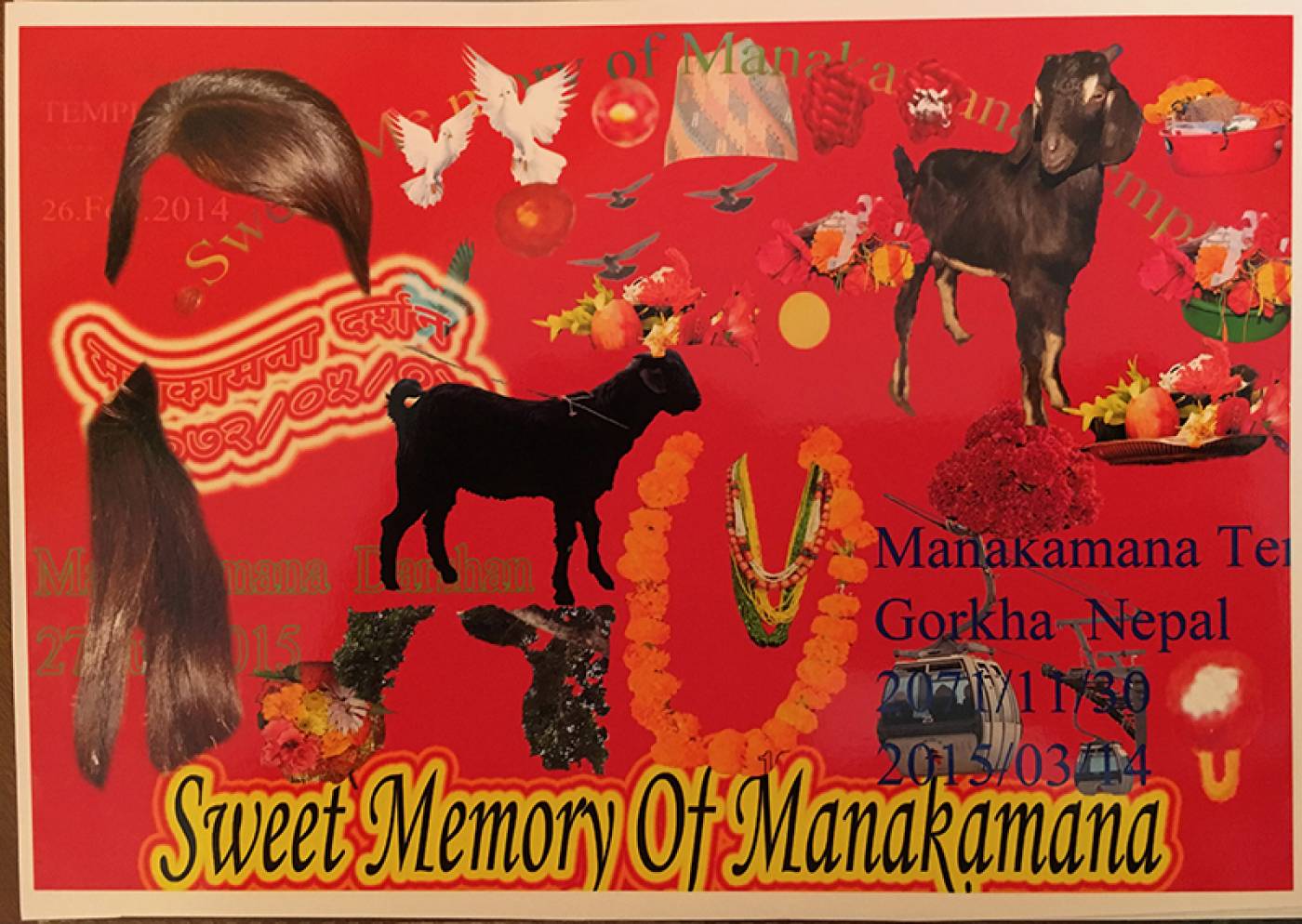‘A Realist Alibi’ – In Conversation with Prof. Christopher Pinney (PART 2)

Photoshop Assemblage showing vaious templates imported from Manokamana shrine and now used at the Dakshinakali shrine in Kathmandu valley. Courtesy : Christopher Pinney
Photography is prophetic, acting in advance of social reality.
As we continue our conversation with Prof. Christopher Pinney, he sheds light on contemporary image culture, the place and function of reconstituted compositions and how they are used to reify ideological notions present in the socio-political realm. Tracing a history of embedded and projected meanings in captured moments – ranging from the assorted practices of montage and painterly embellishment in the early history of image-making – to the present digital proliferation and recurrence activated through filters, algorithms and endless reproductions, this discussion considers the fragmentary as a window onto practices that can yield re-orienting truths and articulate contingencies of subjectivity, spectatorship and ethnography.
Interview with Rahaab Allana and Anisha Baid, 31st May 2020.
To think and write about Indian photography… is to be confronted by the problem of ex-nomination… We now need a ‘world-system photography’, one which grasps the historical inter-connectedness of practice and ceases to ghettoise ‘non-normative’ practices. – Seven Theses on Photography
Prof. Pinney unpacks the contested relationship of the photograph to its referent, invoking differentials in cultural readings that accommodates ‘reality’, despite it’s visual distance from the referent. Upon questioning, he also compares the industry of stock photography – wherein templates of certain iconographies are constructed for advertising events using incidental or real actors – to assemblage practices like the Manorath tradition of the Nathdwara temple in Rajasthan. The hybrid style of the latter presents the families of devotees next to a likeness of Shrinathji, which is meticulously assembled and layered into a new composite of idol, priest and devotee.
Anthropologically studying photography allows one to be a perpetual realist… Whatever the nature of the images you are looking at, they are always evidence of something.
Looking to the future of our photographic technologies, including the looming possibility of ‘Deepfakes’ – generative images made through the use of artificial intelligence (‘adversarial networks’), considers the dimensions of fictionalised histories, visibility, the micro-political and ways in which contexts can change and/or be amplified through a re-working of the distinct units of an image, which may become more than the sum of their parts. We then end with thinking about the evidentiary potential of memory itself – as photography gets more and more removed from it’s empirical positions. Invoking the need for a ‘delicate empiricism’ which should not be taken as solid ground, the conversation invites consideration of a new interdependence between makers and receivers by constantly evolving a dialogue on relationalities or the universal ethos of viewing/exhibiting cultures.
Comments